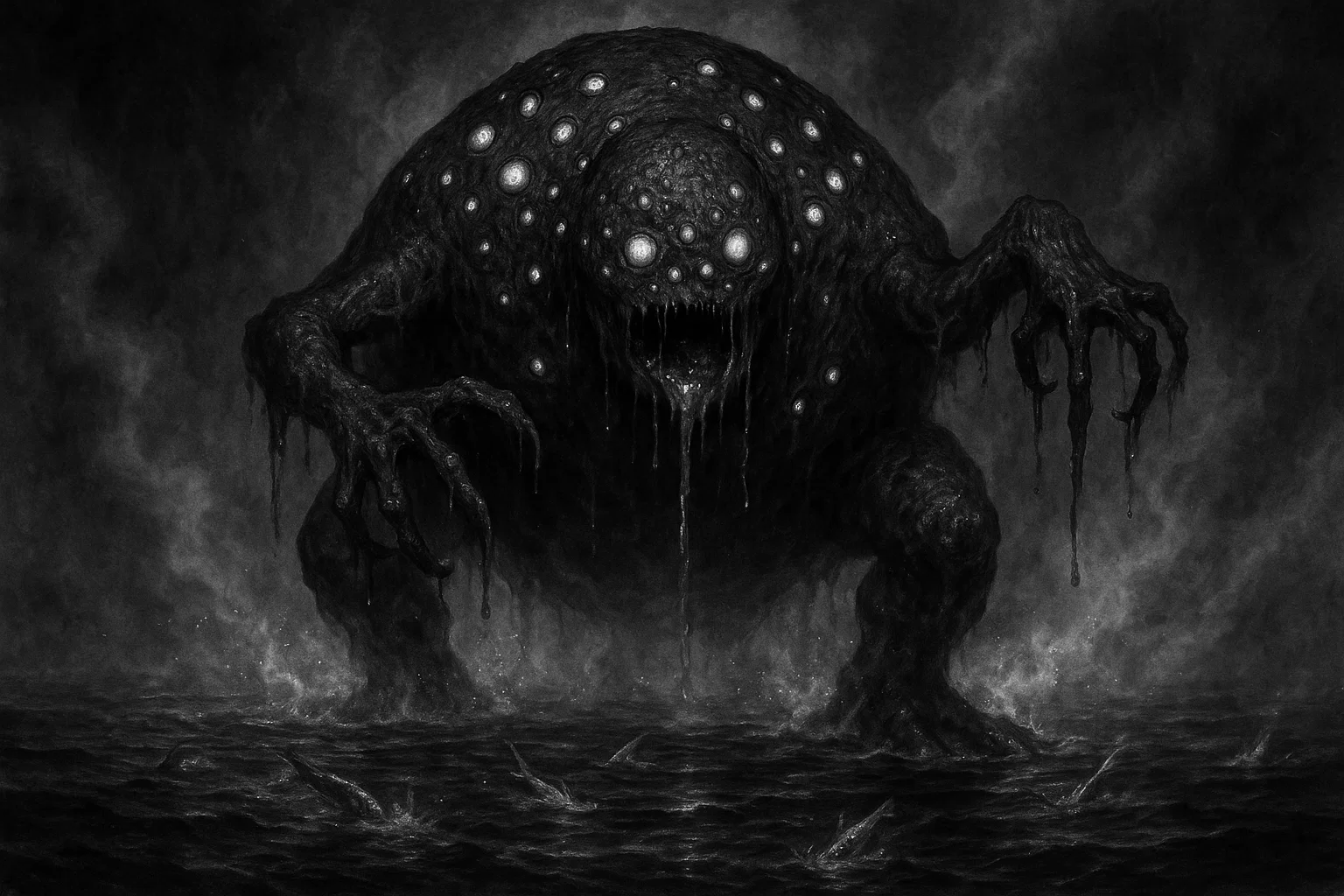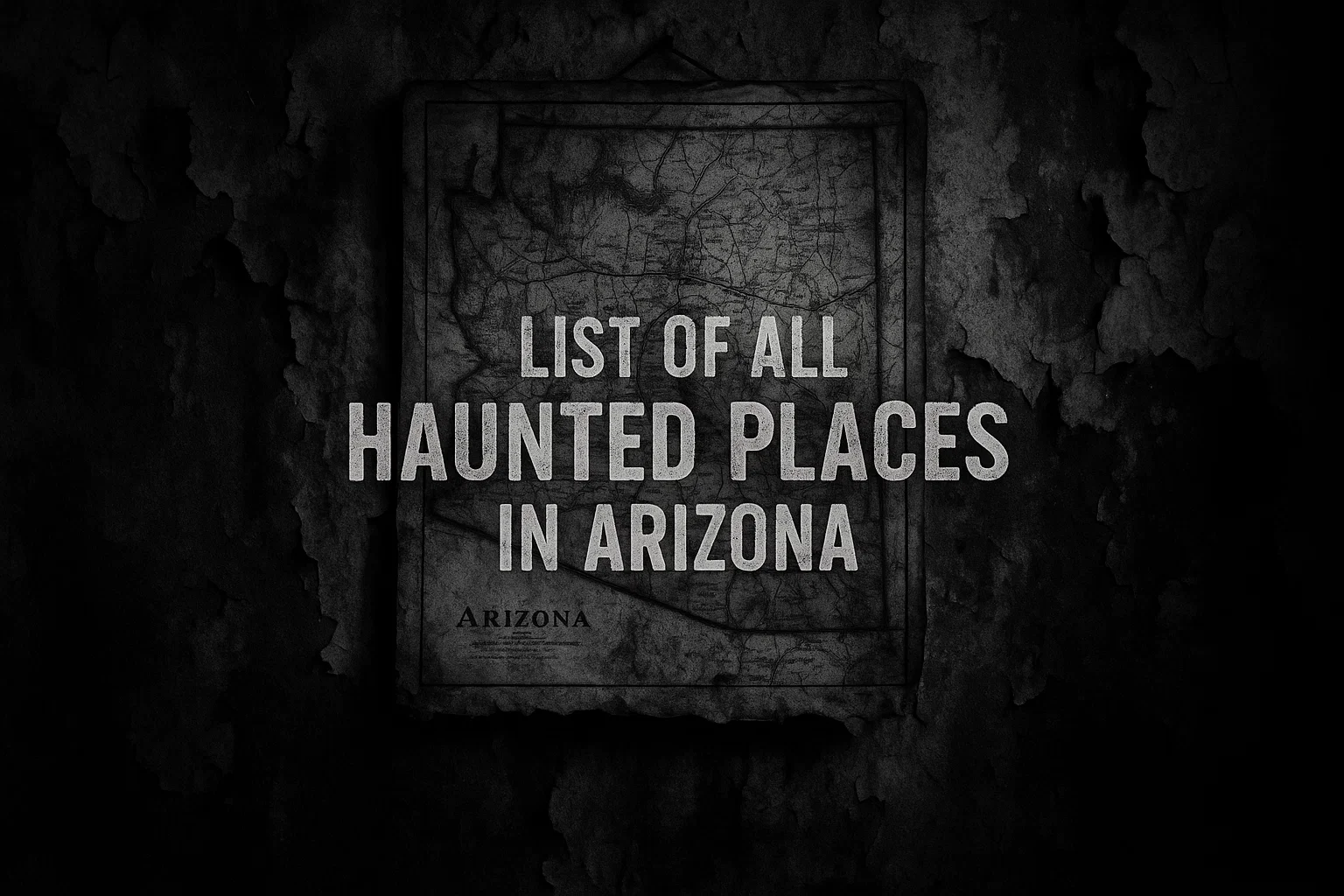What if a single demon could boil rivers, unleash plagues, and shake the earth with its grotesque might?
Asag, a grotesque harbinger of doom from the cradle of civilization itself—Sumerian mythology—whose very essence twists the natural world into a nightmarish tableau of affliction and chaos. This Sumerian demon, born from the union of sky and earth, stands as an archetype of primordial evil, challenging gods and mortals alike in epic tales etched on clay tablets millennia ago.
But why does this monstrous figure, with its rock-hard hide and feverish gaze, continue to echo through the annals of Mesopotamian demonology? Could it be that Asag represents more than myth—a symbolic warning against the invisible forces of disease and discord that still plague humanity today?
Summary
Key Information
| Category | Details |
|---|---|
| Name | Asag (Sumerian: a₂-sag₃, meaning “smasher” or “overwhelmer”); Azag (variant emphasizing repulsive nature); Asakku (Akkadian, denoting a class of fever demons tied to rage and illness) |
| Title | Demon of Sickness and Plague; Ravager of Rivers; Bringer of Drought and Chaos; Winter Cold Personified; Leader of Stone Legions; Underworld Afflictor; Mountain Ravisher |
| Gender | Male |
| Role | Primordial antagonist embodying epidemics, natural disasters, and societal disruption; instigator of fevers that harden flesh and wither crops; symbol of foreign threats and barbaric invasions from the Zagros highlands; chaotic force opposing cosmic order in Sumerian and Akkadian lore |
| Hierarchy | Mid-level underworld entity in Kur (Mesopotamian netherworld); member of the Sebittu (seven demonic siblings serving Nergal, god of plague and death); below major Anunnaki deities like Enlil and Enki but above minor galla torturers and utukku spirits; commands rock demon armies as a chthonic general |
| Servitors | Legion of rock demons (indestructible stone offspring from unions with mountains); asakku fever spirits (causing head afflictions and seizures); allied galla underworld haulers (dragging souls to torment); sebittu kin (seven plague-bringers executing Nergal’s wrath) |
| Superior Demon | Nergal (Akkadian Erra), overlord of the underworld, war, and pestilence, who deploys Asag as a plague enforcer; indirectly subservient to Anu (father, sky god) and Enlil (who sanctions battles against chaos); Enki (wisdom god) aids in Asag’s containment through cunning |
| Powers | Inflicting debilitating fevers and epidemics (e.g., malaria-like symptoms boiling blood and petrifying skin); evaporating waters and causing seismic upheavals; siring invincible rock warriors; spreading barren droughts and crop blights; emitting a repulsive aura that curdles life; manipulating rage to incite human conflicts |
| Appearance | Grotesque, bulbous form: large rounded body without a neck; three mismatched legs for earth-shaking strides; three sinewy arms ending in corrosive claws; multiple bulging eyes scattered across its bulk, glowing with jaundiced fever light; dark, volcanic rock-like skin, cracked and steaming, nearly impervious to harm |
| Etymology | Rooted in Sumerian a-sag, interpreted as “the smasher” or “force-breaker,” evoking disruption of harmony; Akkadian asakku links to asû (fever/rage), signifying burning afflictions; ties to azag (repulsive/unclean), reflecting its hideous, plague-spreading essence |
| Associated Figures | Ninurta (chief adversary, war and farming god who vanquishes Asag); Enlil (fatherly counselor to Ninurta); Anu and Ki (parents, sky and earth deities birthing primordial chaos); Nergal (superior, underworld lord); Sharur (Ninurta’s sentient mace, pivotal in defeat); Tiamat (cosmic parallel as chaos dragon); Sebittu siblings (plague allies) |
| Weaknesses | Susceptible to enchanted divine weapons like Sharur; overreliance on rock servitors exploitable in battle; contained by cosmic decrees from Enlil or Enki; repelled by protective rituals invoking cooling waters or cedar fumigations; bound by underworld hierarchies under Nergal |
| Opposing Angel/Saint | Ninurta (heroic god embodying order against chaos); Raphael (syncretic Abrahamic echo as healer and binder of demons); no direct saintly equivalent, but parallels protective Mesopotamian deities like Ningirsu or Marduk in later Babylonian traditions |
| Equipment/Tools | Natural arsenal: seismic tremors as weapons; plague winds carrying fever spores; heat aura boiling liquids; no personal artifacts, but deploys rock demon hordes as battering rams and shields; associated with mountainous debris blocking rivers |
| Pantheon | Mesopotamian (Sumerian, Akkadian, Babylonian, Assyrian); influences broader Ancient Near Eastern demonology, with echoes in Zoroastrian daevas and Judeo-Christian plague motifs; part of Anunnaki framework governing cosmic and infernal realms |
Etymology
The name Asag demon originates from the Sumerian lexical compound a₂-sag₃, a term laden with connotations of violent disruption and overwhelming force, often translated as “the smasher” or “the one who breaks the force.”
This etymological foundation mirrors the demon’s mythological role as a shatterer of natural equilibrium, inflicting fevers that “smash” the body’s vitality and droughts that fracture fertile plains.
Scholars trace sag to roots meaning “to strike” or “head,” implying Asag as the “head-smasher” of afflictions, particularly those targeting the cranium with burning rage, as seen in incantation texts from Nippur dating to the Ur III period (circa 2100–2000 BCE).
In the Akkadian linguistic evolution, the name shifts to asakku, a pluralized class of demons derived from asû, encompassing both “fever” and “rage”—a semantic duality that underscores Asag’s dual capacity for physical torment and psychological incitement.
This adaptation, evident in Babylonian omen series like Šumma ālu (circa 1700 BCE), positions asakku as epidemic vectors, with Asag as the prototypical singular entity. The variant azag further emphasizes repulsiveness, linked to aza (unclean or taboo), reflecting the demon’s grotesque aura that pollutes waters and withers life, a theme recurrent in exorcistic hymns from the Old Babylonian era (circa 1900–1600 BCE).
Deeper analysis reveals interconnections with broader Mesopotamian nomenclature patterns, where demonic appellations encode their modus operandi—comparable to lilu (night wind spirit) or gallu (soul-dragger).
Asag’s etymology ties into seasonal cycles, with sag evoking “beginning” or “winter onset,” aligning it with Zagros frosts that herald plagues, as noted in agricultural laments from Larsa.
Phonetic shifts in cuneiform—from Sumerian logograms to Akkadian syllabaries—amplified its terror, transforming a₂-sag₃ into a ritual invocation word, where uttering it could summon or banish affliction, a power embedded in maqlû burning ceremonies (circa 700 BCE).
This linguistic depth extends to symbolic layers: Asag as a perverter of me (divine decrees), “overwhelming” the harmonious edicts of Enki with chaotic gig (sickness).
In comparative Semitic studies, echoes appear in Aramaic ʿasq (to oppress) and Hebrew ʿāṣaq (to crush), suggesting Asag’s influence on later Near Eastern plague lore.
Ultimately, the etymology crafts Asag not as a mere name but as a verbal weapon, a syllable-laden curse that ancient scribes wielded in protective spells, ensuring its malevolent resonance endures through millennia of Mesopotamian mythology.
You May Also Like: Adrammelech in the Bible: Child Sacrifices and Idolatry
What Does the Demon Asag Look Like?
The Asag demon is a vision of abject horror, its form a twisted amalgamation that defies natural symmetry and evokes primal revulsion. Towering like a malformed boulder come to life, it features a massive, spherical torso swollen with inner turmoil, lacking a distinct neck to blend seamlessly into its hulking mass.
This central bulk is propped by three uneven legs—sturdy pillars ending in jagged, earth-gouging claws—that allow it to stomp across landscapes, triggering quakes with each thunderous step.
Extending from this grotesque core are three disparate arms, each a sinewy appendage of varying lengths, tipped with dripping talons that secrete a vile, corrosive ichor capable of blistering flesh on contact.
Its surface is a patchwork of dark, obsidian-like scales, hardened to near-indestructibility, cracked with fissures that ooze steam and the stench of decay, as if perpetually forged in volcanic depths. Scattered haphazardly across its body are clusters of eyes—bulbous, lidless orbs glowing with a sickly yellow hue—that swivel independently, piercing victims with stares that ignite internal fevers.
Devoid of a traditional mouth, the Sumerian demon Asag communicates through guttural vibrations emanating from its core, sounds that ripple outward to curdle milk, wilt plants, and summon swarms of pestilent insects.
In ancient cylinder seals from Ur (circa 2500 BCE), it is depicted looming over steaming rivers, its form eclipsing mountains it has violated to spawn stone progeny—hybrids of mineral and malice mirroring its own unyielding terror.
The demon’s appearance symbolizes the grotesque invisibility of plague, a Mesopotamian monster whose mere proximity corrupts vitality into desolation, turning the bountiful into the barren.
Historical and Mythological Background
The Asag demon emerges from the fertile yet fraught cradle of Mesopotamian civilization, originating in the third millennium BCE amid the alluvial plains of Sumer, where the Tigris and Euphrates rivers nurtured humanity’s earliest cities like Uruk and Nippur.
As a chthonic entity born from Anu (the sky god) and Ki (the earth goddess), Asag personifies the untamed perils of the surrounding wilderness—plagues sweeping from the Zagros mountains, droughts parching irrigation canals, and fevers felling the young during harsh winters.
This Sumerian demon reflects the ancient Mesopotamians’ existential dread of forces beyond control, embodying the “otherness” of highland nomads like the Gutians, who raided lowland settlements, thus linking mythological terror to historical invasions around 2200 BCE during the Akkadian Empire’s collapse.
Asag’s mythological roots intertwine with broader Ancient Near Eastern cosmogonies, paralleling chaos monsters like Tiamat in the Babylonian Enuma Elish (circa 1800 BCE), where primordial entities are slain to forge order.
Potential connections span globally: echoes in Zoroastrian daevas like Aeshma (wrath demon), who similarly spreads affliction; Hindu asuras such as Vritra, a drought-bringer defeated by Indra akin to Ninurta’s triumph; or even Norse Jörmungandr, the world-serpent embodying cataclysmic upheaval.
In Egyptian lore, Asag resonates with Apep, the chaos serpent threatening cosmic stability, suggesting shared Indo-European or Afro-Asiatic archetypes diffused through trade routes like the Silk Road precursors. These linkages underscore Asag as a universal symbol of disorder, adapted across cultures to warn against environmental and societal fragility.
You May Also Like: Naamah: The Seductive Demon Queen of Infernal Desires
The Epic Confrontation in Lugal-e
The seminal myth of Asag unfolds in Lugal-e (The Exploits of Ninurta), a 700-line Sumerian epic from Nippur, dated to the Isin-Larsa period (circa 2000 BCE). Asag, spawned from Anu and Ki, erupts as a colossal threat, ravishing personified mountains (Kur) in a grotesque mating ritual birthing indestructible rock demons—hulking stone warriors numbering in the thousands, impervious to mortal weapons and embodying geological fury.
This legion descends upon Sumer’s lowlands, choking rivers with debris, evaporating waters with Asag’s scalding aura, and unleashing epidemics that swell heads with feverish delirium, mirroring plagues in Ur lamentations (circa 2000 BCE).
Ninurta, son of Enlil and god of storms, agriculture, and warfare, confronts Asag in a landscape turned infernal: rivers steam into vapor, fish convulse in scalding agony, and quakes swallow villages.
The battle begins in the plains near Girsu, where Asag’s rock horde forms a phalanx, their granite bodies deflecting Ninurta’s bronze-tipped arrows. Asag itself looms at the rear, its yellow eyes blazing, emitting heat waves that wilt barley fields and sap Ninurta’s divine vigor, symbolizing drought’s toll on fertility, as per Sumerian agricultural records (circa 2100 BCE).
Initially overwhelmed, Ninurta retreats to Ekur temple in Nippur, seeking Enlil’s counsel. Enlil bestows Sharur, a sentient mace forged from cosmic bronze, its voice whispering strategies and blazing with thunderous power.
Ninurta returns, wielding Sharur to summon tempests, hurling lightning that cracks rock demons into fragments. Archaeological finds from Tell Brak (circa 2000 BCE) suggest ritual reenactments of this storm-battle, with priests scattering basalt shards to mimic Ninurta’s victory.
The conflict escalates in a second phase near the Tigris headwaters, where Asag unleashes seismic tremors, splitting earth to trap Ninurta’s allies—lesser deities like Bau (healing goddess) and Gula (health patron).
Ninurta counters by channeling Enki’s wisdom, redirecting floodwaters to erode the stone legion’s foundations, a tactic echoing Sumerian canal engineering feats at Lagash (circa 2500 BCE). Asag, enraged, emits a plague wind, infecting warriors with convulsions; cuneiform fragments describe victims’ “flesh hardening as Asag’s hide,” akin to tetanus symptoms in Assur medical texts.
The climax unfolds on a sacred hill, possibly Dilmun’s mythic mount, where Ninurta lures Asag into a trap. Feigning retreat, he baits the demon to overextend, its rock horde lumbering into a narrow valley.
Sharur, glowing with Enlil’s me, strikes Asag’s “liver” (vital core), spilling ichor that fertilizes barren soil, a motif tied to Sumerian fertility rites. The rock demons, leaderless, are shattered into fragments Ninurta repurposes as natural dams, channeling floods into the Tigris and Euphrates, as evidenced by hydraulic structures in Shuruppak layers (circa 2900 BCE).
Post-victory, Ninurta reorganizes the world’s me, assigning stones roles in construction—limestone for temples, flint for tools—while cursing defiant minerals to shatter under hammers.
This resolution, adapted in Akkadian Ninurta’s Deeds (circa 1200 BCE), transforms Asag from destroyer to inadvertent creator, its defeat birthing ordered civilization. The epic’s annual recitation during Akitu festivals reinforced Sumerian identity, celebrating resilience against chaos, as confirmed by Ur III ceremonial tablets.
The Epidemic Harbinger in the Utukkū Lemnūtu Incantation Series
In the Akkadian Utukkū Lemnūtu (Evil Spirits) series, compiled during the Neo-Assyrian era (circa 900–600 BCE) in Ashurbanipal’s Nineveh library, Asag manifests as asakku, a spectral plague demon haunting Kur’s seven gates.
Legends portray Asag infiltrating urban centers like Nineveh via mountain passes, afflicting populations with symptoms akin to malaria—boiling blood, rigid limbs, and jaundiced skin hardening like stone, documented in medical texts from Assur (circa 700 BCE) describing “asakku-seizure” as fever-induced convulsions.
A poignant vignette from Borsippa tablets (circa 600 BCE) depicts Asag besieging a birthing chamber in Ur, withering maternal milk and twisting infants with colic, reflecting historical infant mortality rates in Mesopotamian census records.
Exorcists, or āšipu, invoke Ningirsu (Ninurta’s Lagash variant) with cedar and myrrh fumigations, chanting: “Asag, child of heaven and earth, retreat to your stony lair!” Asag’s withdrawal summons cooling rains, tying it to equinox rituals combating seasonal inversions.
These cycles, performed during Akitu festivals, frame Asag as a migratory scourge, its incursions linked to Gutian nomads demonized as Asag’s earthly proxies in Sargonic inscriptions (circa 2300 BCE).
You May Also Like: Rahab: Leviathan’s Twin and the Forgotten Demon Prince
Asag’s Alliances in Babylonian Chaos Narratives
Babylonian variants, such as Enuma Elish fragments (circa 1100 BCE), align Asag with Tiamat’s abyssal brood, positioning it as a chaotic adjunct to her monstrous offspring like Lahmu and Ugallu.
A lesser-known legend from Esagila temple archives narrates Asag corrupting lamassu guardians—protective bull-spirits—into plague conduits during Marduk’s exile, twisting benevolence into malevolence amid Babylonian political upheavals like the Kassite invasions (circa 1500 BCE).
Marduk, wielding four winds, disperses Asag’s essence into hailstones, collected as talismans against fever in ritual compendia. This tale shifts Asag from lone ravager to hierarchical pawn, its subjugation reinforcing Babylon’s imperial ideology: demons like Asag serve as tests of divine kingship.
Omen literature from Sippar (circa 700 BCE) augments this, portraying Asag’s emergence heralded by comets or eclipses, blending myth with astral divination to perpetuate its dread in zodiacal portents.
Syncretic Myths and Global Parallels
Asag’s influence permeates later syncretisms, such as Assyrian hymns (circa 800 BCE) equating it with Erra’s plague minions, or Hittite adaptations where it parallels storm demons like Illuyanka, defeated by Tarhunna in rituals mirroring Ninurta’s feats.
Worldwide connections abound: in Zoroastrian Avesta (circa 1000 BCE), Asag resembles Aeshma-daēva, a wrath demon spreading disease; Vedic hymns depict Vritra as a drought serpent slain by Indra, akin to Asag’s river-boiling; even Mesoamerican Xolotl, underworld dog-demon causing earthquakes, shares chthonic traits.
These parallels suggest diffusion via Bronze Age trade networks, with Asag embodying universal fears of pandemics, as evidenced by Hittite plague prayers (circa 1300 BCE) invoking Mesopotamian-style exorcisms. In essence, Asag’s background transcends Sumer, weaving a global tapestry of chaos monsters that civilizations tamed through heroic narratives.
Historical Mentions
| Text/Grimoire | Year | Description | Excerpt |
|---|---|---|---|
| Lugal-e (The Exploits of Ninurta) | c. 2100 BCE | Epic Sumerian poem detailing Asag’s hideous form, rock army, and defeat by Ninurta; symbolizes chaos-to-order transition in Mesopotamian cosmology. | “The Asag, whose face is the bile of the drowned maiden, whose glance is the weapon of the mountains, whose mouth is the devourer of men, whose tongue is the goad of rage… His presence makes the rivers seethe, the fish therein to boil in agony.” |
| Utukkū Lemnūtu (Evil Spirits) | c. 1800–1000 BCE | Akkadian incantation compendium listing asakku demons; Asag as fever-bringer from mountains, targeted in exorcisms for head ailments. | “The asakku, the rage-demon, son of Anu, who seizes the neck, who brings fever to the flesh… From the mountain he comes, with stones as his brethren, afflicting the head with burning, the body with stone-hard chill.” |
| Enuma Elish (Epic of Creation) Variants | c. 1800 BCE | Babylonian creation myth fragments; Asag aligned with Tiamat’s chaotic spawn, embodying primordial disorder. | “From the raging Tiamat, monsters arose… Asag among them, hideous and boiling, whose allies of stone defy the gods’ decree.” |
| Šumma Ālu Omen Series | c. 1700 BCE | Babylonian divination texts; Asag’s appearances as portents of plague and drought, linked to cometary signs. | “If a comet streaks the sky like Asag’s bile, fever shall grip the land, waters boil, and stones rise in rebellion.” |
| Maqlû (Burning) Rituals | c. 700 BCE | Assyrian anti-witchcraft series; Asag invoked as head-afflicting demon, countered by figurine-shattering rites. | “Asag, spawn of An and Ki, who hardens the flesh like rock… Burn in the flame, retreat to Kur’s gates!” |
You May Also Like: Vassago: The Demon Who Pretends to Be an Angel
Asag’s Powers and Abilities
Asag possesses an arsenal of malevolent abilities uniquely tailored to its role as a plague-bringer and chaos incarnate, setting it apart from generic demonic tempters in Mesopotamian mythology.
Unlike seductive spirits like lilu that erode the psyche through nocturnal whispers, Asag corrupts through tangible, visceral assaults: inducing fevers that petrify flesh into stone-like rigidity, symbolizing the ossification of life into death.
This specificity draws from ancient medical observations, where Asag’s plagues mimic symptoms of diseases like tetanus or ergotism, documented in Assur diagnostic texts (circa 700 BCE), where victims’ bodies “harden as Asag’s hide.”
Asag tempts humanity indirectly, exploiting frailty—whispering to the afflicted that yielding to illness grants eternal rest, or to drought-stricken farmers that raiding neighbors restores bounty, thus sowing discord and fracturing communities. Its powers, rooted in elemental perversion, bridge divine origins with infernal rage, mocking creation by inverting fertility into barrenness.
In rare pop culture echoes, such as black metal lyrics invoking Asag as a “rock demon lord” (e.g., bands like Asagraum deriving names from its essence), it gains “modern” abilities like amplifying wrath in chaotic rituals, though these remain speculative extensions of mythic fever-rage.
Distinctively, Asag’s seismic command triggers volcanic eruptions, unleashing subterranean toxins that poison wells, a power tied to historical Zagros earthquakes (circa 2200 BCE) that disrupted Sumerian trade.
This contrasts common demonic possession, focusing instead on environmental corruption—boiling rivers to kill aquatic life, as in Lugal-e, where fish convulse in agony, tempting survivors to abandon riverine settlements for nomadic strife.
| Power/Ability | Description | Source | How It Tempts/Corrupts Humans |
|---|---|---|---|
| Fever Induction (Plague Emanation) | Radiates an aura causing epidemics like malaria, with symptoms of boiling blood, seizures, and skin petrification; affects entire populations, hardening bodies into stone-like states. | Utukkū Lemnūtu (c. 1800 BCE) | Lures the weak with illusions of relief through surrender, inciting paranoia where victims blame kin for curses, eroding trust and sparking witch-hunts. |
| Aquatic Evaporation (Scalding Presence) | Mere proximity steams rivers dry, scalding fauna and flora; symbolizes infertility and drought, turning oases barren. | Lugal-e (c. 2100 BCE) | Provokes desperation, tempting resource-hoarding or invasions of fertile lands, corrupting communal harmony into greed-driven wars. |
| Rock Demon Procreation (Stone Legion Summoning) | Mates with mountains to birth indestructible rock warriors; horde serves as earthquake-triggering infantry. | Ninurta’s Deeds (Akkadian, c. 1200 BCE) | Instills false empowerment in warriors, corrupting borders with visions of conquest, turning allies into foes amid rubble. |
| Seismic Cataclysm (Earth-Rending Fury) | Unleashes quakes and eruptions, wounding landscapes and releasing poisonous fumes; tied to volcanic activity. | Šumma Ālu Omens (c. 1700 BCE) | Tempts treasure-seekers with buried riches in ruins, leading to reckless exploitation that unleashes further curses and avarice. |
| Rage Infusion (Psychic Affliction) | Channels inner wrath to incite human violence, amplifying fevers into hallucinatory rages; unique to Asag’s etymological “rage-demon” root. | Maqlû Rituals (c. 700 BCE) | Corrupts healers by mimicking ailments, turning remedies toxic and fostering distrust in communal medicine or divine favor. |
| Drought Blight (Crop-Withering Curse) | Spreads aridity that desiccates fields, causing famines; extends to withering human vitality. | Lamentation Hymns (c. 2000 BCE) | Whispers justifications for theft during scarcity, corrupting societal bonds into survivalist betrayals. |
How to Counter Asag’s Powers
Defending against Asag requires a multifaceted approach rooted in Mesopotamian ritual traditions, blending exorcism, divine invocation, and symbolic reversal to neutralize its plague-ridden essence.
Central to countermeasures are maqlû ceremonies, where āšipu priests craft clay effigies of Asag, inscribe its name in cuneiform, and incinerate them under lunar phases, dispersing ashes in flowing waters to “quench” its scalding aura—a practice evidenced in Assurbanipal’s library tablets (circa 650 BCE). This exploits Asag’s elemental vulnerability, turning its heat against itself through sympathetic magic.
For fever induction, Utukkū Lemnūtu prescriptions mandate fumigations with aromatic resins like cedar and tamarisk, recited thrice at twilight: “Asag, fever-forger, dissolve in Enki’s flood; retreat to Kur’s stony womb!” These bind its spectral incursions, particularly during vulnerable periods like childbirth, using lapis lazuli beads strung as necklaces to invoke sky-god protection, drawing from Ur III amulet finds (circa 2100 BCE).
Against rock legions, Ninurta hymns empower artisans to sculpt lamassu statues—hybrid guardians channeling heroic might—to pulverize summoned stones, reinforced by communal chants during equinoxes.
Seismic powers demand Enlil’s decree rituals: ziggurat altars receive barley and obsidian offerings, stabilizing earth through cosmic me realignment, as in Hittite-influenced Assyrian rites (circa 800 BCE).
In syncretic adaptations, Zoroastrian fire purifications circle salt barriers while intoning Avestan wards against daeva-like entities. Overall, countermeasures stress unity—Asag thrives on division, so shared vigils and harvest feasts fortify societal resilience, transforming potential corruption into collective strength against its insidious whispers.
You May Also Like: Fresno Nightcrawler: Real Cryptid or Clever Hoax?
Asag’s Role in the Hierarchy of Hell
Within the stratified infernal realms of Mesopotamian cosmology, the Asag demon claims a formidable mid-tier position in Kur (also Irkalla or Arali), the dusty, gate-guarded underworld where shades linger in eternal gloom and demons enforce Nergal’s edicts.
As a member of the Sebittu—a fraternity of seven (sometimes eight) malevolent siblings born to Anu and Ki—Asag functions as a plague lieutenant, executing campaigns of affliction under Nergal’s (Erra’s) command, the scorched-visaged god of war, death, and epidemics who rules from Cuthah’s throne.
This hierarchy mirrors the Anunnaki’s celestial court, with Asag below apex deities like Ereshkigal (queen of the dead) but above lowly utukku ghosts and alu night-stalkers, as delineated in Utukkū Lemnūtu (circa 1000 BCE).
Asag rules the mountainous peripheries of Kur, a barren domain of jagged peaks and fever pits where it sires rock demon armies—indestructible legions numbering in the thousands, serving as seismic enforcers and plague carriers, akin to historical Gutian hordes in Sargonic texts (circa 2300 BCE).
Notable subordinates include its stone progeny, specialized in earth-rending assaults, and asakku kin, fever spirits that swarm human realms like locusts. Superiors extend to Nergal, who deploys Asag in divine wars, and indirectly Anu, whose paternal decree binds its chaos; Enlil sanctions its containment, viewing it as a test of order.
Allied demons encompass the Sebittu brethren—plague vectors like Namtar (fate-bringer) and Mutu (death)—forming ad hoc coalitions for underworld incursions, as in Erra epic fragments (circa 800 BCE).
Adversaries abound: Ninurta as eternal foe, whose Sharur mace shattered its hordes; Pazuzu, wind demon rival for elemental dominance, often invoked apotropaically against Asag; and Marduk, who scatters its essence in Babylonian variants.
Relationships are volatile—Asag’s rage incites temporary pacts with gallu torturers for soul-dragging, yet provokes rebukes from Enki for overstepping cosmic bounds. In this hellish bureaucracy, Asag embodies regulated chaos, a mid-rank general whose plagues maintain infernal balance, influencing later hierarchies like Zoroastrian Angra Mainyu’s daevas or Judeo-Christian fallen angels.
Astrological Associations and Symbolism
Asag entwines deeply with Mesopotamian astral symbolism, where celestial phenomena foretell its malevolent descents—comets dubbed “Asag’s bile” signaling fever outbreaks, and equinoctial storms heralding rock horde mobilizations, as per Šumma Ālu omens (circa 1700 BCE).
Symbolically, Asag personifies Saturn’s malefic chill, embodying restriction and hardship through winter’s grip, hardening earth and spirit alike. Its sacred number, seven, mirrors the Sebittu and Kur’s gates, denoting malevolent completeness; the earth element anchors its mountainous tyranny, opposing Enki’s watery renewal, while fire undertones fuel its boiling aura.
Colors encapsulate Asag’s dread: charred black for volcanic hide, jaundiced yellow for eye-glare and fever pallor, dusty gray for drought ash—hues dyed into warning talismans during Akitu rites. Metals like lead evoke its immobilizing weight, used in binding chains; precious stones such as obsidian reflect its indestructible scales, etched for seismic wards.
Days align with the seventh, tied to Sabbath-like observances averting incursions; planets link to Saturn’s rings, symbolizing encircled chaos.
| Association | Details | Symbolic Meaning |
|---|---|---|
| Element | Earth (primary, with fire infusions) | Unyielding petrification; chaos birthed from mountain depths, inverting fertility into barren rigidity |
| Planet | Saturn | Malefic trials of endurance; restrictive cold mirroring winter plagues and seismic lockdowns |
| Zodiac | Scorpio | Venomous intensity; hidden decay and transformative affliction through feverish stings |
| Number | 7 (Sebittu fraternity) | Infernal wholeness; traversal of underworld gates, amplifying collective malevolence |
| Day | Seventh (lunar cycle alignments) | Winter onset vigils; rituals fasting against equinoctial storms and plague heralds |
| Metal | Lead | Oppressive heaviness; symbolic chains binding rage, countering seismic whims |
| Precious Stone/Crystal | Obsidian (volcanic glass) | Mirror of hardened hide; protective blades slicing through illusory health |
| Color | Black/Yellow/Gray | Scorched earth desolation; feverish jaundice; ashen barrenness of afflicted lands |
You May Also Like: The Cursed Noh Mask | Horror Story
Asag’s Sigil
Though primordial Mesopotamian traditions favor ideographic cuneiform over elaborate seals, the Asag demon‘s sigil emerges in occult reconstructions as a fractured heptagram—seven jagged points for the Sebittu—encircled by a serpentine coil clutching obsidian shards, evoking its stone-siring and fever spirals.
Cylinder seals from Nippur (circa 2100 BCE) depict proto-sigils: stylized mountain profiles dotted with eyes, radiating heat waves, used to ward thresholds against plague entry. In ritual contexts, this emblem binds Asag’s chaos, inscribed on lead tablets during waning moons to repel epidemics, or blood-traced on altars for invocations seeking controlled hardship.
Hellenistic syncretisms evolve it into scorpion-tailed glyphs, merging Asag with chthonic daimons, emphasizing its scorpion-like zodiac ties. The sigil’s dual utility—banishing or harnessing—mirrors Mesopotamian magic’s ambivalence, where symbols contain rather than eradicate evil.
| Symbol/Item | Association/Meaning | Use in Rituals |
|---|---|---|
| Obsidian Shard | Volcanic armor; pierces deceptive vitality | Amulets for expelling fevers; shattered in burnings to disperse aura |
| Basalt Rock | Mountain progeny; unyielding horde essence | Powdered for barrier circles; offered to Ninurta for stone reorganization |
| Juniper Incense | Cooling vapors against scalding rage | Fumigated in exorcisms to evaporate Asag’s presence |
| Cobra Serpent | Coiling wrath; venom as epidemic metaphor | Skins as threshold wards; effigies arrow-pierced for seismic calm |
| Yellow Ochre | Jaundiced glare; affliction warning | Painted on lintels for protection; blended in salves against blight |
| Barley Sheaf | Reversal of crop withering; renewal token | Sprinkled in invocations to counter drought-induced greed |
| Lapis Lazuli | Sky opposition; Anu’s legacy turned shield | Beaded chains for birthing safeguards against asakku swarms |
Comparison with Other Demons
| Demon | Origin & Role | Powers & Appearance | Key Relations & Unique Trait vs. Asag |
|---|---|---|---|
| Pazuzu | Mesopotamian; wind king warding plagues | Storm-bringer; canine-lion head, scorpion tail, emaciated | Rival to Lamashtu; apotropaic protector channeling chaos defensively unlike Asag’s pure offense |
| Lamashtu | Sumerian-Akkadian; childbed terror | Miscarriage-causer; lion head, hairy body, bird talons | Countered by Pazuzu; feminine infanticide vs. Asag’s broad elemental rage |
| Humbaba | Sumerian (Gilgamesh epic); forest guardian | Wind-roarer; seven terror auras, tree-entwined | Slain by Gilgamesh; territorial warden differing from Asag’s migratory epidemics |
| Gallu | Sumerian underworld; soul-dragger | Shadowy torturer; chains, gaping maws | Serves Nergal; logistical hauler without Asag’s plague scale |
| Lilu | Mesopotamian; night incubus | Vitality-drainer; ethereal gusts | Opposed by Inanna; subtle erotic erosion vs. Asag’s physical assaults |
| Alu | Akkadian; insomnia demon | Lethargy-inducer; faceless shadow | Bound by Marduk; mental whisperer contrasting Asag’s bodily petrification |
| Utukku | Sumerian-Akkadian; evil spirit class | Possession-afflictor; ghostly hybrids | Countered by Enki; versatile archetype lacking Asag’s volcanic motif |
| Anzû | Sumerian-Akkadian; storm-bird thief | Destiny-stealer; lion-eagle, fire-breather | Defeated by Ninurta; aerial cosmic thief vs. Asag’s grounded tyranny |
| Rabisu | Babylonian; ambush lurker | Opportunistic striker; snake-tailed prowler | Underworld kin; stealthy predator differing from Asag’s overt cataclysms |
| Namtar | Sumerian; fate-plague minister | Death-deliverer; invisible messenger | Serves Ereshkigal; bureaucratic executor without Asag’s rock legions |
| Edimmu | Akkadian; vengeful ghost | Life-sapper; spectral humanoid | Rises from unburied; ancestral haunter vs. Asag’s environmental blights |
| Lahmu | Babylonian; primordial guardian | Protective monster; hairy, serpentine | Tiamat’s spawn; defensive hybrid contrasting Asag’s invasive hordes |
You May Also Like: Bathsheba Sherman True Story: The Conjuring’s Real Witch?
Conclusion
The Asag demon, with its feverish gaze and earth-shattering legions, endures as a profound emblem of humanity’s ancient confrontations with uncontrollable horrors—plagues that decimate, droughts that starve, and chaos that unravels the fragile threads of order.
From the boiling rivers of Lugal-e to the shadowed gates of Kur, Asag’s myths illuminate the Mesopotamian worldview: a cosmos where divine heroes like Ninurta labor to contain primordial evils, forging civilization from the remnants of defeat. Asag serves not merely as a villain but as a catalyst, its afflictions compelling renewal and resilience in the face of existential threats.
Exploring Asag’s grotesque form, seismic powers, and infernal alliances reveals a figure whose influence ripples through global mythologies, from Zoroastrian daevas to Vedic asuras, reminding us that some terrors are universal.
Yet, in its vulnerabilities—bound by rituals, shattered by enchanted weapons—lies a message of hope: evil, however hideous, yields to vigilant guardianship and communal strength. As modern echoes in art and lore attest, Asag’s shadow lingers, urging us to confront the demons of decay with the same unyielding spirit that tamed ancient chaos.
Ultimately, the demon teaches that hierarchy, whether in hell’s depths or heaven’s storms, bends to those who wield knowledge wisely. As the Euphrates flows renewed from Ninurta’s victory, so may we defy the shatterers among us, transforming terror into enduring wisdom for generations yet unborn.







